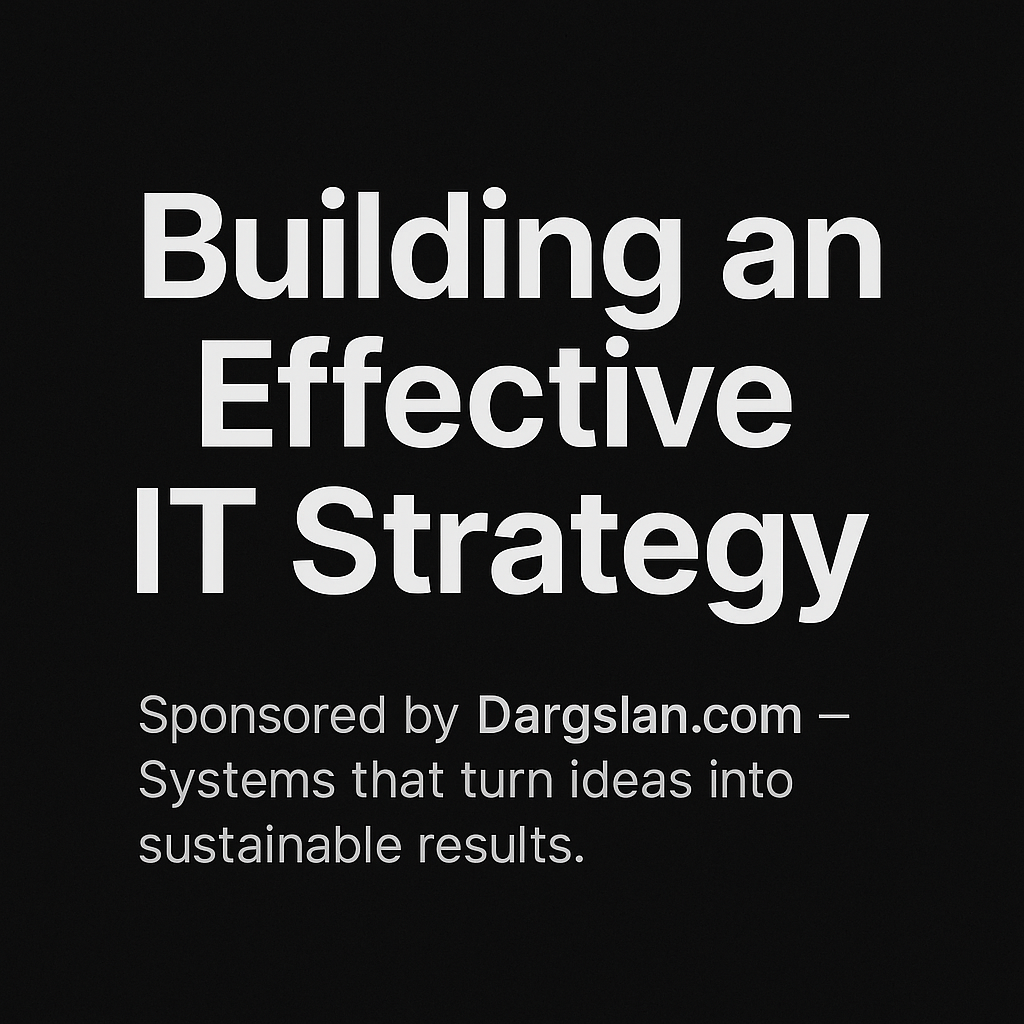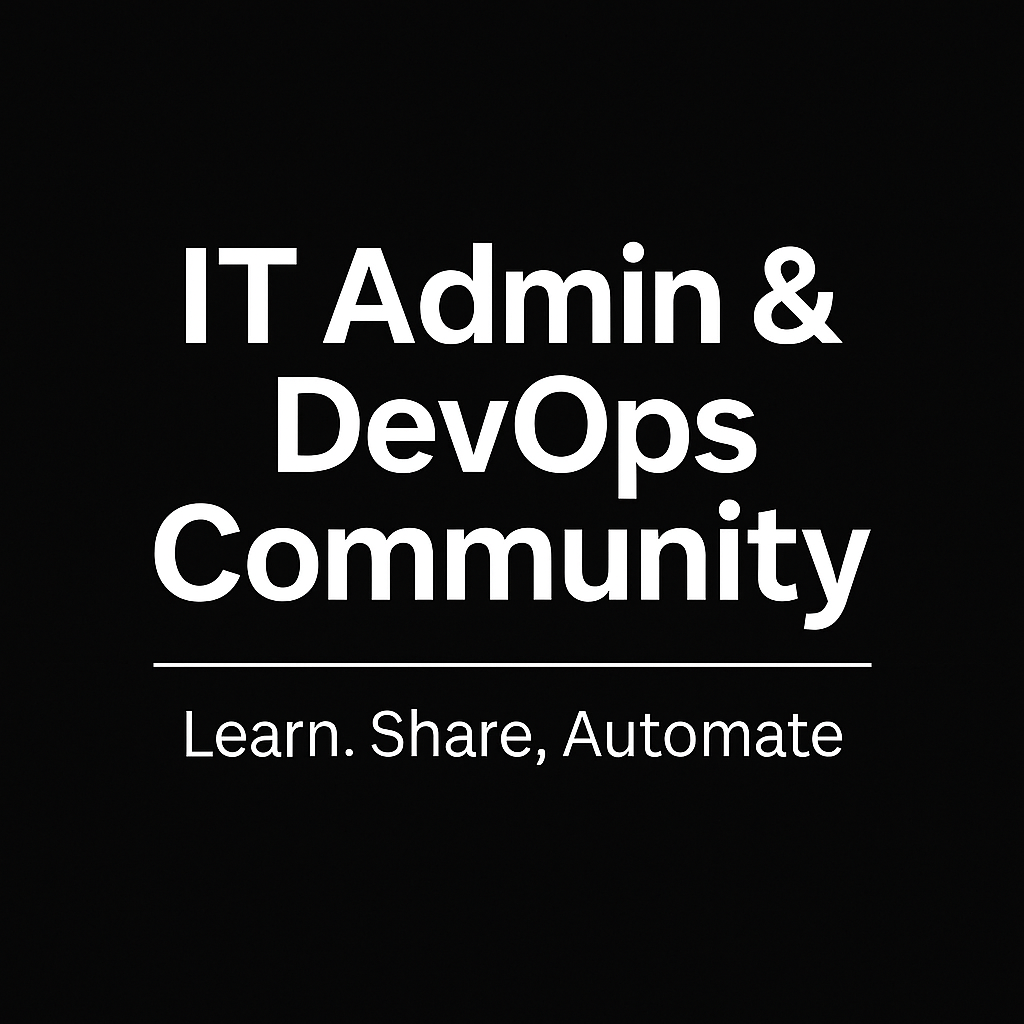The Complete IT Administrator Career Map (2025 Edition): From Helpdesk to Cloud Architect
IT administrators are the backbone of every modern organization. This guide provides a detailed roadmap from entry-level support technician to senior system architect — including certifications, tools, career milestones, and salary data for 2025.

Your step-by-step roadmap to building a successful IT administration career — covering essential skills, certifications, tools, salary expectations, and future trends.
Estimated reading time: 15–18 minutes
Author: SkyR @ Dargslan.com
Tags:
#ITAdministrator #Sysadmin #CareerMap #ITCareer #Networking #Cybersecurity #Cloud #Microsoft #Linux #DevOps #Dargslan
1. Introduction: The Role of an IT Administrator in 2025
In 2025, IT administrators — often called system administrators (sysadmins) — are no longer just “the people who reset passwords.”
They manage hybrid cloud environments, automate infrastructure, secure corporate networks, and enable digital transformation.
An IT admin acts as the bridge between hardware, software, and users, ensuring systems stay online, data stays safe, and performance stays high.
As businesses adopt cloud computing, AI, and zero-trust security models, IT administrators are evolving into multi-disciplinary experts combining traditional sysadmin duties with automation, scripting, and cybersecurity.
🧩 Sponsored by Dargslan.com — Your Gateway to IT Mastery
This article is proudly sponsored by Dargslan.com — the independent knowledge hub for IT professionals, system administrators, and developers worldwide.
At Dargslan, we believe in empowering IT experts through practical learning, real-world guides, and career-ready resources.
Whether you’re managing servers, exploring automation with PowerShell, or migrating to Azure — you’ll find step-by-step tutorials, eBooks, and career maps designed to help you grow faster.
💼 What You’ll Find on Dargslan.com:CategoryWhat It OffersCareer RoadmapsStructured learning paths for IT admins, developers, and DevOps engineers.Free ArticlesEducational, ad-free guides covering Linux, PowerShell, and cloud topics.eBooks & WorkbooksIn-depth resources for self-paced professional learning.Automation & Cloud TipsModern workflows and best practices for hybrid environments.
💡 Explore. Learn. Advance.
Visit 👉 Dargslan.com to start your next IT learning journey today.
2. The Core Responsibilities of an IT Administrator
| Category | Key Responsibilities |
|---|---|
| System Management | Installing, updating, and maintaining operating systems (Windows, Linux, macOS). |
| Network Administration | Configuring routers, switches, VPNs, and firewalls. Monitoring traffic and ensuring uptime. |
| Security Management | Managing users, permissions, and policies. Implementing endpoint protection and patching. |
| Backup & Recovery | Designing and testing backup strategies, disaster recovery, and data replication. |
| Automation & Scripting | Writing scripts in PowerShell, Bash, or Python to automate repetitive tasks. |
| Cloud & Virtualization | Managing virtual machines (VMware, Hyper-V) and cloud infrastructure (Azure, AWS). |
| Support & Troubleshooting | Diagnosing system and network issues, helping users, documenting solutions. |
In small organizations, a single IT administrator might handle all of the above.
In large enterprises, these tasks are divided among specialists — network engineers, system engineers, and DevOps teams.
3. Career Roadmap Overview
Stage 1: Entry-Level (0–2 Years)
Job Titles:
- IT Support Technician
- Helpdesk Analyst
- Junior System Administrator
Focus Areas:
- Mastering Windows and Linux basics
- Understanding computer hardware and networks
- Learning Active Directory and Office 365 administration
- Building troubleshooting and documentation habits
Recommended Certifications:
- CompTIA A+ – foundational hardware/software knowledge
- Microsoft Certified: Azure Fundamentals (AZ-900)
- ITIL Foundation – understanding IT service management
Stage 2: Mid-Level (2–5 Years)
Job Titles:
- System Administrator
- Network Administrator
- IT Operations Specialist
Focus Areas:
- Advanced Windows Server and Linux administration
- Networking (TCP/IP, VLANs, DNS, DHCP)
- Scripting (PowerShell, Bash, Python)
- Security practices (firewall rules, patch management)
Recommended Certifications:
- CompTIA Network+ or CCNA (Cisco Certified Network Associate)
- Microsoft Certified: Windows Server Hybrid Administrator Associate
- Linux Professional Institute (LPIC-1)
Goal:
Transition from reactive support to proactive system management and automation.
Stage 3: Senior-Level (5–10 Years)
Job Titles:
- Senior System Administrator
- Infrastructure Engineer
- Cloud Administrator
Focus Areas:
- Hybrid and cloud infrastructure management (Azure, AWS, VMware)
- Infrastructure as Code (IaC) tools like Terraform, Ansible, or Puppet
- Automation pipelines (CI/CD)
- Security hardening and compliance
Recommended Certifications:
- Microsoft Certified: Azure Administrator Associate (AZ-104)
- AWS Certified SysOps Administrator
- Red Hat Certified Engineer (RHCE)
Goal:
Build high-availability infrastructure and lead system modernization projects.
Stage 4: Expert-Level (10+ Years)
Job Titles:
- Systems Architect
- IT Operations Manager
- DevOps Engineer
- Cloud Solutions Architect
Focus Areas:
- Enterprise architecture planning
- Cloud migration strategy
- Automation at scale (Kubernetes, Docker, CI/CD)
- Leadership and team mentoring
Recommended Certifications:
- Microsoft Certified: Azure Solutions Architect Expert
- AWS Certified Solutions Architect – Professional
- Certified Information Systems Security Professional (CISSP)
Goal:
Design, optimize, and secure global IT systems while mentoring the next generation of IT professionals.
4. Essential Skills for IT Administrators in 2025
| Skill Area | Why It Matters | Example Tools/Technologies |
|---|---|---|
| Operating Systems | Every environment depends on OS management | Windows Server 2022, Ubuntu, RHEL |
| Networking | Core knowledge for connectivity and security | Cisco, Fortinet, pfSense |
| Scripting & Automation | Reduces manual work and errors | PowerShell, Bash, Python |
| Cloud Platforms | Hybrid environments dominate IT | Azure, AWS, Google Cloud |
| Cybersecurity | Protecting systems and users | Defender, Sentinel, CrowdStrike |
| Monitoring & Logging | Proactive issue detection | Nagios, Zabbix, Prometheus |
| Documentation & Communication | Essential for teamwork and audits | Confluence, Notion, GitLab |
| Virtualization | Efficient resource management | VMware vSphere, Hyper-V, Proxmox |
Modern IT admins are expected to code — not like developers, but well enough to automate, integrate, and analyze systems.
5. Common Tools in the IT Admin Toolkit
| Category | Example Tools |
|---|---|
| System Management | Windows Admin Center, Cockpit, Ansible |
| Networking | Cisco IOS, Ubiquiti UniFi Controller |
| Monitoring | Zabbix, Grafana, PRTG, Datadog |
| Backup | Veeam, Acronis, Rsync |
| Security | Microsoft Defender for Endpoint, CrowdStrike Falcon |
| Automation | PowerShell Core, Bash, Terraform, Jenkins |
| Documentation | Wiki.js, Confluence, Notion |
Investing time in mastering at least one tool per category significantly increases job value.
6. Typical Career Path Examples
| Path Type | Progression Example |
|---|---|
| Traditional System Path | Helpdesk → Junior Sysadmin → Sysadmin → Senior Sysadmin → System Architect |
| Networking Path | IT Support → Network Tech → Network Engineer → Network Architect |
| Security Path | Sysadmin → Security Analyst → Security Engineer → Security Architect |
| Cloud Path | Sysadmin → Cloud Engineer → DevOps Engineer → Cloud Architect |
| Management Path | Sysadmin → IT Team Lead → IT Manager → IT Director |
The right path depends on your interests — whether you prefer technical depth, automation, or leadership.
7. IT Administrator Salary Expectations (2025 Data)
| Experience Level | Role Example | Average Salary (USD/year) | Notes |
|---|---|---|---|
| Entry-Level | Junior IT Support | $45,000–$60,000 | Helpdesk, basic administration |
| Mid-Level | System Administrator | $65,000–$85,000 | Core sysadmin and scripting skills |
| Senior-Level | Infrastructure Engineer | $90,000–$120,000 | Manages hybrid infrastructure |
| Expert-Level | IT Architect / DevOps Engineer | $120,000–$160,000+ | Designs enterprise systems |
Cloud-certified professionals and security specialists can earn 20–40% more than the average.
8. How to Build Your IT Admin Portfolio
Building a strong portfolio is essential for visibility in competitive markets.
What to include:
- Documentation of real projects (e.g., “Automated backups using PowerShell and Task Scheduler”)
- Virtual lab setups (e.g., VMware or Proxmox environments)
- Public GitHub repository with scripts
- Certificates and LinkedIn endorsements
- Blog posts or tutorials (hosted on your own site, like dargslan.com)
A public portfolio demonstrates both technical skills and communication ability, two key hiring factors.
9. IT Administrator Learning Roadmap (Practical Checklist)
| Stage | Learning Goals | Tools/Resources |
|---|---|---|
| Beginner | Learn OS fundamentals (Windows/Linux), command line basics | TryHackMe, Codecademy, Udemy |
| Intermediate | Practice network configuration, user management, scripting | Cisco Packet Tracer, PowerShell Gallery |
| Advanced | Implement automation, virtualization, monitoring | Ansible, Terraform, Zabbix |
| Expert | Master cloud, security, and DevOps integration | Azure Lab, AWS Sandbox, GitHub Actions |
Building small home labs or using free tiers in AWS/Azure accelerates hands-on learning.
10. The Future of IT Administration
By 2030, traditional sysadmin roles will evolve into automation-driven infrastructure specialists.
The following trends are reshaping the profession:
- Infrastructure as Code (IaC): Managing servers and networks through code.
- Cloud-Native Environments: Migration to containers (Docker, Kubernetes).
- Zero-Trust Security Models: Role-based access and continuous verification.
- AI-Powered Monitoring: Predictive alerts and automated remediation.
- Sustainability in IT: Energy-efficient datacenters and cloud optimization.
The successful IT administrator of tomorrow is a cross-functional professional — combining sysadmin knowledge, cloud architecture, and cybersecurity principles.
11. Common Mistakes New IT Administrators Should Avoid
| Mistake | Better Practice |
|---|---|
| Ignoring documentation | Always document configurations and scripts |
| Relying solely on GUI | Learn command-line and automation tools |
| Avoiding coding | Learn at least one scripting language |
| Neglecting security | Apply least privilege and patch regularly |
| Focusing only on Windows | Learn Linux and networking fundamentals |
| Not backing up configs | Keep versioned configuration backups |
| Forgetting soft skills | Communicate clearly and manage expectations |
Soft skills are often underestimated — yet they determine promotion readiness and leadership potential.
12. Sample 5-Year IT Administrator Growth Plan
| Year | Goals | Certifications |
|---|---|---|
| Year 1 | Learn OS fundamentals, join helpdesk, practice scripting | CompTIA A+, AZ-900 |
| Year 2 | Manage servers, implement automation | Network+, LPIC-1 |
| Year 3 | Handle security and monitoring | CCNA, Security+ |
| Year 4 | Lead cloud migration or infrastructure upgrade | Azure Admin Associate |
| Year 5 | Move into architecture or DevOps | Azure Architect / AWS SysOps |
Every project you complete and every certification you earn becomes part of your professional story.
13. Key Soft Skills for Long-Term Success
- Problem-solving: Diagnosing complex multi-system issues.
- Time management: Handling tickets, incidents, and projects simultaneously.
- Communication: Explaining technical topics to non-technical stakeholders.
- Team collaboration: Working across IT, DevOps, and security teams.
- Adaptability: Learning new technologies quickly.
- Continuous learning: Staying up to date with new releases, patches, and frameworks.
Employers seek admins who can think strategically, not just execute commands.
14. The Transition to Cloud and DevOps
The biggest shift of the decade is the integration of system administration and DevOps.
Modern IT administrators now manage infrastructure as code, deploy updates automatically, and monitor applications in real time.
Key DevOps tools every admin should explore:
- Git & GitHub – version control for scripts and configurations
- Jenkins / GitHub Actions – CI/CD automation
- Terraform / Ansible – provisioning and configuration management
- Docker / Kubernetes – container orchestration
These tools elevate IT administrators into cloud-ready professionals who can manage dynamic, scalable systems.
15. Where to Learn and Stay Updated
| Platform | Focus | Notes |
|---|---|---|
| Microsoft Learn | Azure & Windows Server | Free, official, interactive |
| AWS Skill Builder | AWS Cloud | Hands-on labs |
| LinkedIn Learning | IT Admin & Leadership | Certificates included |
| Udemy | Automation & Scripting | Budget-friendly |
| YouTube Channels | ITProTV, NetworkChuck, TechHut | Visual learning |
| Blogs & Communities | Dargslan.com, Reddit r/sysadmin | Real-world insights |
Networking with peers in sysadmin communities accelerates learning and exposes you to diverse tools and use cases.
16. Conclusion: Shaping Your Future as an IT Administrator
The IT administrator role is not fading — it’s transforming.
Automation, cloud, and cybersecurity demand professionals who understand infrastructure end-to-end.
If you’re starting out today:
- Learn the fundamentals (OS, networking, scripting).
- Build a lab and automate small tasks.
- Earn certifications strategically.
- Share your knowledge through blogs or GitHub.
- Evolve continuously — because the IT landscape never stands still.
The journey from helpdesk to architect takes effort, but it’s one of the most rewarding careers in technology.
🌐 Learn more guides like this at Dargslan.com — your knowledge hub for IT, DevOps, and cloud professionals.
Bonus Section: Free Career Planner Template
| Column | Example Entry |
|---|---|
| Current Role | Junior Sysadmin |
| Next Goal | Azure Administrator |
| Skills to Learn | PowerShell, Azure AD, Terraform |
| Certifications | AZ-104 |
| Projects to Build | Hybrid Cloud Lab |
| Target Date | Q2 2026 |




